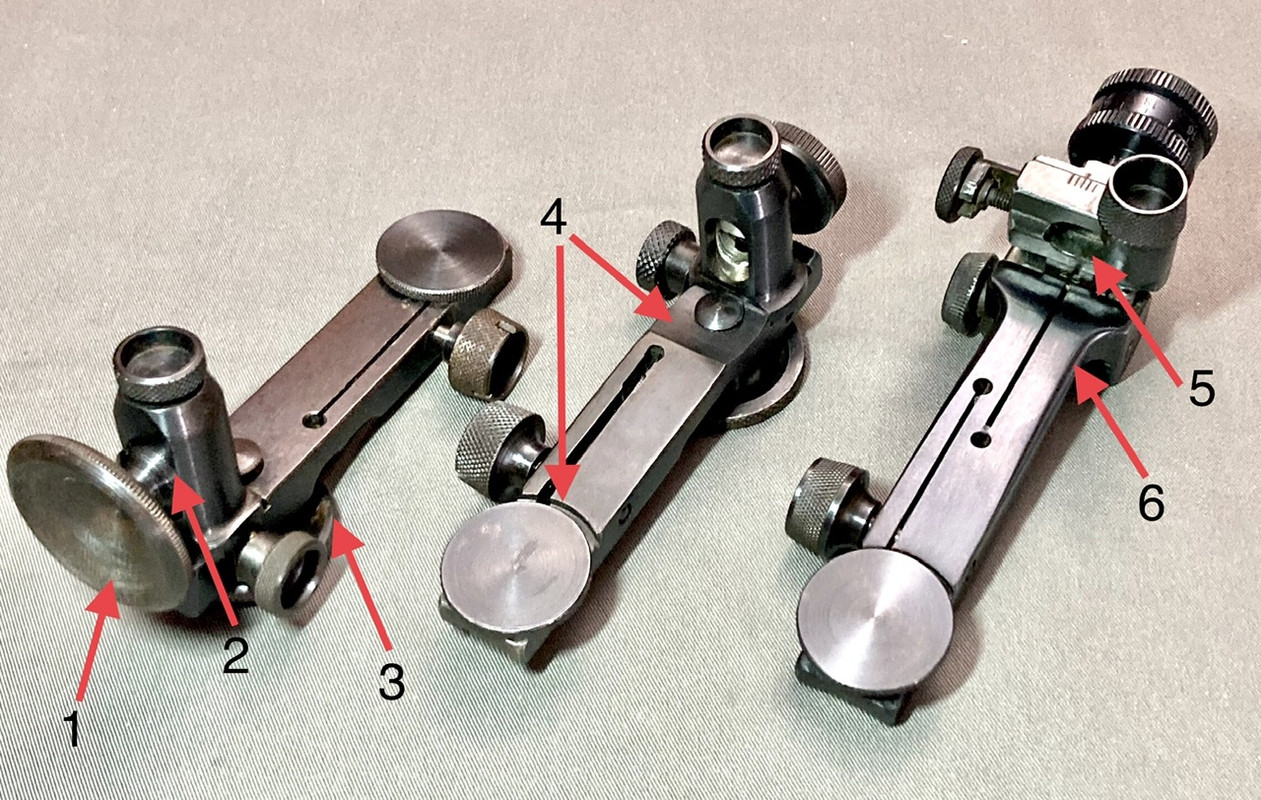Sights seem to be a magnet for nice details. Here are some Weihrauch ones from the 50's.
Front sight from an early HW 55. Before more efficient flat metal inserts came along, front sights had these nice turned steel posts, interchanged by tapping the hood off and using a setscrew. These will also fit some other brands - and they actually show up on That Auction Site fairly often.

These three diopters are also from HW 55's. The two on the left are older, and solid milled steel; this "turret" style must have been manufactured in small batches, as there seem to be endless variations. The third one on the right is a newer generation introduced about 1959. Points of interest:
1. Huge eye disk with textured anti-glare rear face on this early turret sub-variant.
2. The disk's front flange mates with the turret's face to lock the elevation adjustment into place.
3. The huge thumbwheel underneath serves only to lock the windage setting (do Germans obsess over wandering settings?)
4. This later turret model has the top thumbwheel, which mates with the positioning holes in the rifle's receiver, recessed to fit flush with the base. The whole rear section is also dropped down a bit.
5. The revised design has changed to a more elaborate cast-metal adjuster module.
6. But the base is still solid steel. As far as I can tell, the small tapered radius down the top edges is purely for aesthetics; reminiscent of the FLZ's front post in the OP!






 Reply With Quote
Reply With Quote












